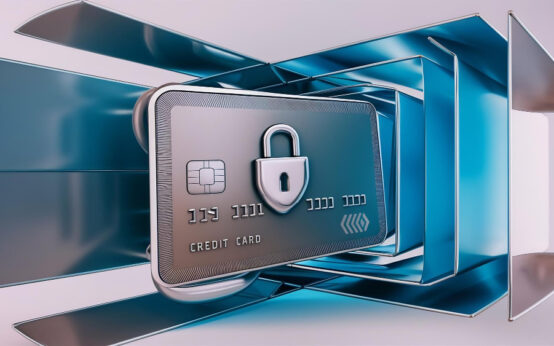Credit Card Interest-Free Periods can be a powerful tool for smart financial management if used correctly. This article explores what interest-free periods are, how they work, and how you can take full advantage of them. By understanding the nuances, you can avoid unnecessary interest charges and manage your credit more effectively.
Understanding Interest-Free Periods
Interest-free periods on credit cards allow you to make purchases without immediately incurring interest charges. These periods usually last between 20 to 55 days, depending on the credit card issuer. During this time, you can pay off your balance without any extra cost beyond what you originally spent. However, if the balance is not paid in full by the end of the interest-free period, interest will be charged on the remaining amount.
Understanding key dates is crucial. The interest-free period generally starts from the date of the transaction and extends to the payment due date of the billing cycle. Knowing these dates helps you manage your finances better and plan your repayments more effectively.
It’s also important to note any exclusions. Certain transactions, such as cash advances and balance transfers, may not be eligible for the interest-free period. Always check the terms and conditions of your credit card to avoid unexpected charges.
You can take full advantage of interest-free periods by timing your purchases wisely. For example, making a purchase at the beginning of the billing cycle will give you more days interest-free compared to a purchase made towards the end of the cycle.
Additionally, understanding how partial payments work is essential. If you carry a balance from the previous month, new purchases might not be eligible for an interest-free period. This can lead to higher overall interest costs. Pay off the full balance each month to continually benefit from interest-free periods.
How to Maximize Your Interest-Free Period

To make the most of your credit card’s interest-free period, it’s essential to pay attention to the billing cycle. Start by tracking the start and end dates of your billing cycle. Purchases made at the beginning of the cycle give you the maximum time to pay off your balance without incurring interest.
Utilize automatic reminders to ensure you never miss a payment. Late payments can void your interest-free period, leading to unexpected charges. Scheduling your payments ensures you stay within the interest-free window.
Another key tip is to pay your balance in full each month. Partial payments can lead to interest on the remaining balance, nullifying the benefits of the interest-free period. Budget effectively to manage your monthly expenses and avoid overspending.
Consider utilizing balance alerts. These notifications can help you track your spending and stay within your budget. This approach prevents overspending, and helps maintain financial discipline.
Common Mistakes to Avoid
One of the most common mistakes people make is not knowing their billing cycle. Failing to understand this can lead to unexpected interest charges. Always confirm your billing cycle dates and plan your purchases accordingly.
Another mistake is carrying a balance. If you do not pay off your balance in full each month, you will incur interest charges, negating the benefits of the interest-free period.
Many people also misunderstand the grace period. Not all purchases may qualify for an interest-free period. Check your credit card’s terms to know which purchases are eligible.
Avoid making large purchases near the end of your billing cycle. This reduces the duration of your interest-free period. Plan large expenses at the beginning of the cycle.
Ignoring due dates is another big mistake. Late payments can result in losing your interest-free period and incurring late fees. Set up automatic payments to ensure timely payments.
Finally, using multiple credit cards without tracking their billing cycles can get you into trouble. Keep a calendar and track all important dates for each card.
By avoiding these common mistakes, you can fully benefit from the interest-free periods offered by credit cards.
The role of Billing Cycles

The billing cycle plays a crucial role in managing your credit card’s interest-free periods. Billing cycles are generally monthly periods during which transactions are recorded. Once the cycle ends, a statement is generated detailing your outstanding balance, available credit, and due date.
Understanding your billing cycle helps you plan your purchases more effectively. If you make a big purchase at the beginning of your cycle, you can enjoy the longest possible period before the balance is due. Therefore, timing your expenses to coincide with the start of a new billing cycle can maximize your interest-free period.
Grace Periods and Billing Cycles
Many credit cards offer a grace period, typically 21 to 25 days, after the billing cycle ends. If you pay off your full balance within this grace period, you avoid paying interest. Failing to pay off the entire balance, however, will result in interest charges on the remaining amount.
Knowing the specific dates of your billing cycle can also help in avoiding late fees. Missing a payment can lead to hefty fees and the loss of the interest-free benefit for that billing cycle. Set up reminders or automatic payments to ensure you never miss a due date.
Synchronization of Multiple Cards
If you have multiple credit cards, synchronize their billing cycles for easier management. Aligning them can simplify tracking due dates and ensure that you can strategically plan your purchases to utilize the interest-free periods on all your cards effectively.
In conclusion, mastering the role of billing cycles lets you take full advantage of interest-free periods. With careful planning and timely payments, you can optimize the benefits offered by your credit card.
Tips for Managing Multiple Credit Cards
Managing Payment Due Dates
One of the first things to consider is the due date for each credit card. Aligning the payment due dates can make it easier to stay on track. You can usually request to change the due date with your issuer.
Keeping Track of Spending
Use budgeting apps or spreadsheets to monitor spending on each card. It helps in making sure you are spending within your means and can pay off the balances without incurring interest.
Prioritizing Payments
If you have balances on multiple cards, prioritize paying off the one with the highest interest rate first. This method is known as the avalanche method and can save you money in the long run.
Utilizing Card Benefits Strategically
Each credit card may offer different benefits like cashback, rewards points, or travel perks. Use cards based on the benefits they provide for specific types of purchases. For example, use a card with higher cashback for groceries and another for travel expenses.
Monitoring Credit Utilization
Credit utilization ratio is important for maintaining a healthy credit score. Try to keep the balance on each card below 30% of the credit limit. This can positively impact your credit score and make you eligible for better credit offers in the future.



 Best credit cards secured: your path to a stronger credit history <p style='text-transform:none; line-height:20px !important; font-size:16px; font-weight:normal; color:#424242; margin: 0px; margin-top:10px;'>They offer a smart way to show lenders you’re serious about managing your finances.</p>
Best credit cards secured: your path to a stronger credit history <p style='text-transform:none; line-height:20px !important; font-size:16px; font-weight:normal; color:#424242; margin: 0px; margin-top:10px;'>They offer a smart way to show lenders you’re serious about managing your finances.</p>  The best credit cards for lounge access: your key to premium airport comfort <p style='text-transform:none; line-height:20px !important; font-size:16px; font-weight:normal; color:#424242; margin: 0px; margin-top:10px;'>With these cards, you have exclusive access to lounges, offering comfort while you wait for your flight.</p>
The best credit cards for lounge access: your key to premium airport comfort <p style='text-transform:none; line-height:20px !important; font-size:16px; font-weight:normal; color:#424242; margin: 0px; margin-top:10px;'>With these cards, you have exclusive access to lounges, offering comfort while you wait for your flight.</p>  Safe, simple, and fun: discover the best debit cards for kids <p style='text-transform:none; line-height:20px !important; font-size:16px; font-weight:normal; color:#424242; margin: 0px; margin-top:10px;'>These cards offer the flexibility and convenience that both parents and kids need.</p>
Safe, simple, and fun: discover the best debit cards for kids <p style='text-transform:none; line-height:20px !important; font-size:16px; font-weight:normal; color:#424242; margin: 0px; margin-top:10px;'>These cards offer the flexibility and convenience that both parents and kids need.</p>